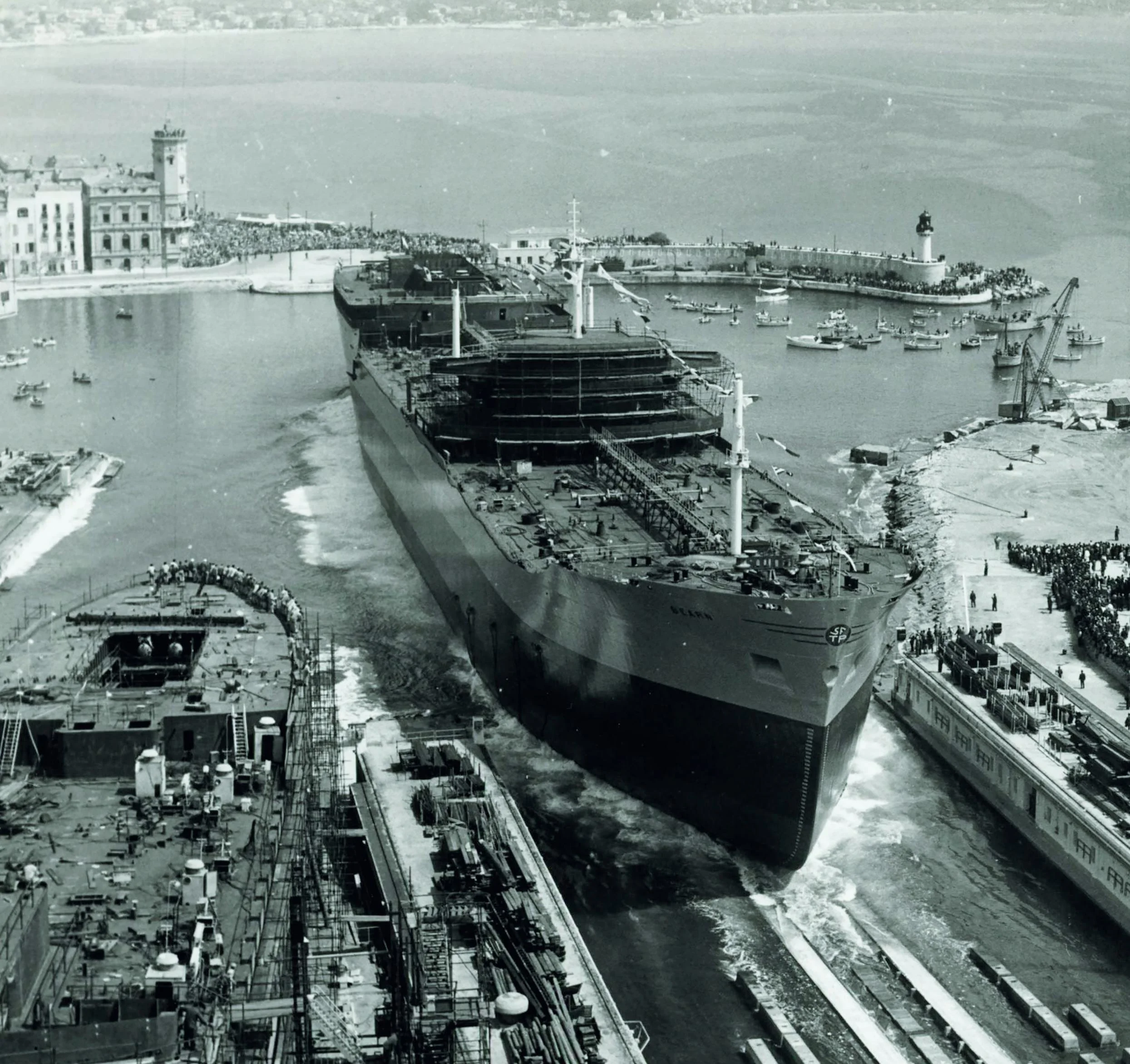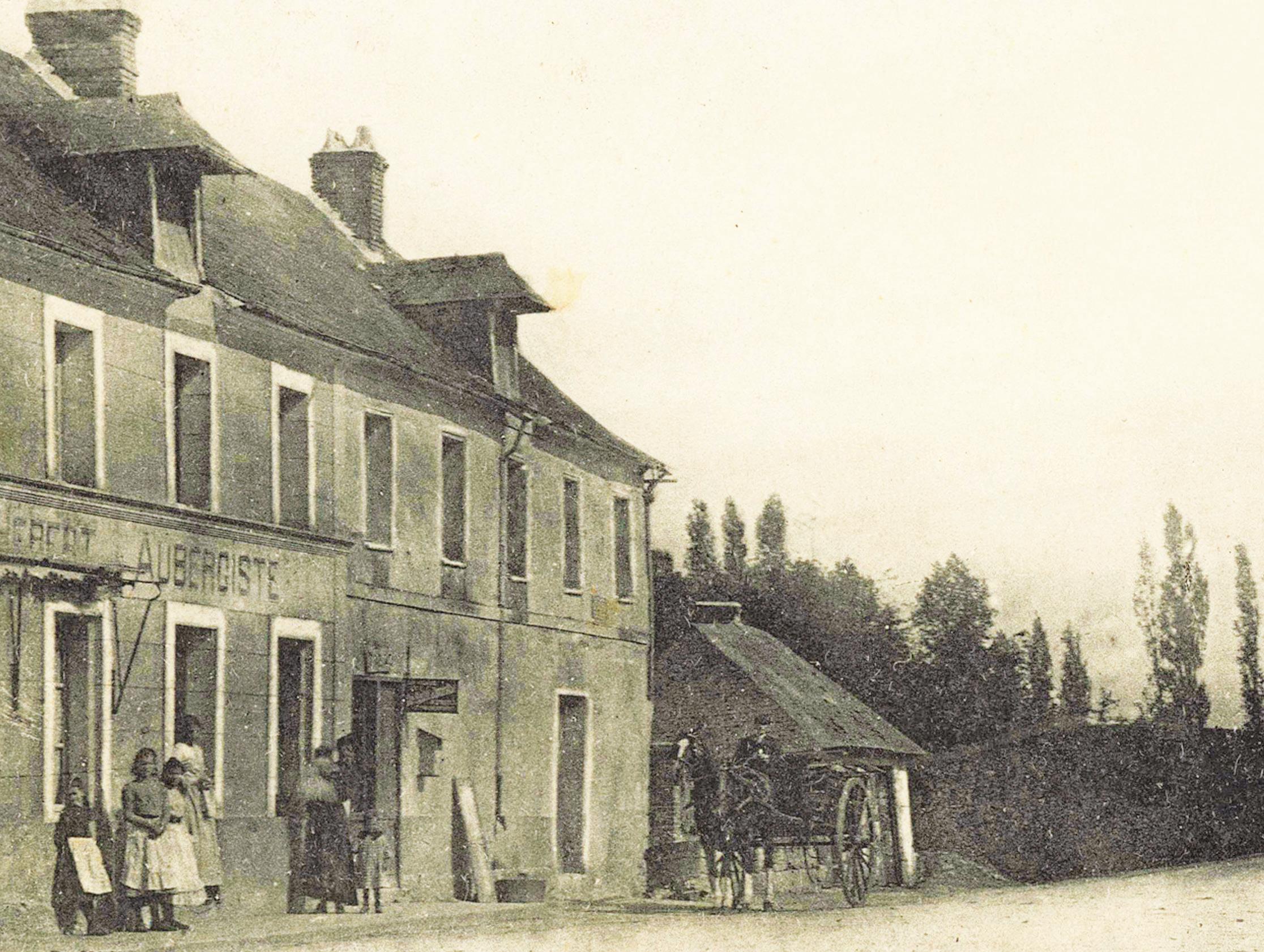
4 minute read
Introduction
Nestled between two meanders of the Seine, Le Trait had forever been tucked away between river and forest, earning its living from fishing, forestry and agriculture. A nondescript Normandy village, its lethargy came to abrupt end in 1917. Whereas elsewhere, the war brought death, havoc and desolation, for Le Trait it was a source of unexpected growth and rebirth. Within just four years, a radical change occurred. Fields and green pastures gave way to vast construction shops, while the riverbanks became home to eight large slipways. Its status transformed from a small village to a bustling town at the forefront of technological, social and cultural progress. The entire Seine valley, on the road to Paris, entered the Industrial Age. Nowadays, for anyone familiar with the rural landscape of Normandy, with its fields, cows, apple trees and names like Yvetot, Yerville and the Plateau de Caux, just as for anyone familiar with maritime Normandy and its cities of Honfleur, Dieppe, Le Havre or Cherbourg, the sight of Le Trait will come as a surprise. The town is unparalleled in appearance and ambiance, bisected by a straight arterial road extending for several kilometres, while here and there you will see houses, buildings and shops. Secondary roads run parallel. It doesn’t really have a town centre, normally characterised by a town hall, church and nearby market square. Sharp eyes are needed to find anywhere that could be described as historic: possibly the area surrounding Saint-Nicolas church, now on the outskirts following the town’s transformation. It must be remembered – or, at least,
not forgotten – that for almost half a century (1917–1966/1972), the lifeblood of Le Trait was its shipyard, otherwise known as the “Ateliers et Chantiers de la Seine-Maritime,” or “ACSM” for short. In 1917, Le Trait had a population of just 350. The figure for 2012 was 5,329. Accelerating until the 1930s and peaking at more than 6,400 in the 1960s, this growth was rooted in the decision of Worms & Cie to establish an industrial complex in the town, thus creating a new community and fostering its culture. How did a previously rural, wooded and even swampy village develop into a garden city, one of the most advanced of its day in terms of social and practical organisation, an exemplary town in the eyes of visiting officials and journalists, as witnessed by their many enthusiastic articles? Such an outcome could not have been achieved without overcoming numerous challenges: piecing together a vast domain from parcels of land in the hands of various property owners; importing materials despite the war; building infrastructures; attracting a labour force and training it if needed; providing housing with suitable conditions of hygiene and comfort; feeding, caring for and entertaining workers and their families; in a nutshell, recruiting and retaining a labour force in this neck of the woods. Having accomplished that, the village developed into a town with streets, neighbourhoods, houses, shops, a health centre, a community centre, a cinema, etc. A town with a unique physiognomy: a garden city, to which the residents’ attachment throughout the decades was testimony to its success. Yet a town now without shipbuilding. ACSM belongs to the past. A glorious industrial past, for sure, but a bygone past. The company was unable to come to terms with competition from its French and foreign rivals at a time when order books were hard to fill: its inland location on the banks of the Seine was unsuitable for launching ships with ever-increasingly gigantic tonnage. At the end of the 1950s, the government decided to concentrate naval shipbuilding, which led to the merger of ACSM with the Chantiers Navals de La Ciotat forcing ACSM to close its doors in 1972. Losing its main employer, the deeply wounded town had to “reinvent” itself. Starting in 1974, Le Trait got a second wind by welcoming Flexi-France, a major player in the flexible pipe industry, a colossus, it seemed, when looking at the huge coils stored in its warehouses on the Rue Jean-Huré. Sanofi Aventis, another flagship of the French economy, brought further relief. Like the ships built by ACSM, the reputation of these companies and their products has travelled across oceans. What initially attracted them to Le Trait? The founding action – if not the fruitful power – of Maison Worms. The importance of the industrial saga in Le Trait and the value of its urbanisation surpass the local or regional context. Preserving and disseminating this two-pronged story fell first to Béatrice Maheut in 1982, under the direction of Marcel Boivin; and then to Paul Bonmartel, the Le Trait chronicler and author of numerous publications: Le Trait, cité nouvelle (1995); Histoire du chantier naval du Trait (1997); Histoire du patrimoine industriel de DuclairYainville-Le Trait (1998); Les pionniers traitons (2006). Likewise, the research conducted by Jacques Derouard and the three-volume work by Gilbert Fromager entitled Le Canton de Duclair have enabled younger generations to relive 20th century life in Le Trait. This books falls in line with those publications.
9






